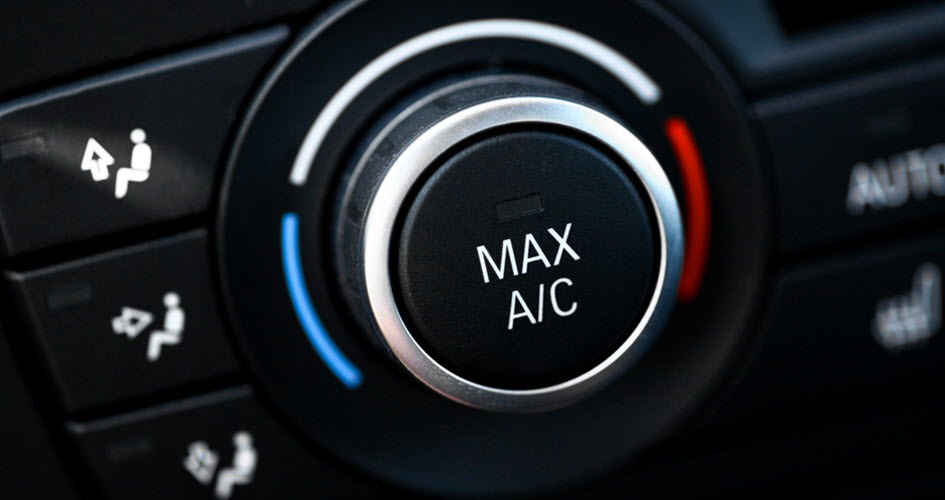Is your car air conditioner failing you or giving you any form of headache? If it is, there are a couple of things that may be wrong with it.
No doubt, looking under the hood at your car’s air conditioner might scare the hell out of you or even overwhelm you.
Fixing it might seem particularly complex if you consider yourself lacking the manual dexterity needed. However, once you figure out how it delivers cold air, you will realise that it is really not rocket science.
How Does Your Car Air Conditioner Work?
Before we look at how to fix your car’s problematic air conditioner, let us have a quick look at how it works. Your heater and air conditioner (HVAC) perform three jobs: heat the interior up, defrost the windshield and keep the interior of the car cool. These modes work efficiently as a complete system, and the climate control system is under the regulation of the main computer which sits in the dash most of the time.
The compressor receives commands from the computer and initiates the cooling process: pressurizing the refrigerant along with the blend door actuators, which direct the flow of air from the floor, mid and defrost vents.
The air door actuators in turn control air temperature by mixing the hot air from the heater and the cold air from the A/C. It is, therefore, clear that the air conditioner can malfunction as a result of a break in the proper functioning of one of these parts.
Parts of the Air Conditioner
Your car’s air conditioning system is composed of four basic parts crucial to the release of cold air: a compressor, powered by the engine using a serpentine belt; but electrically powered on hybrid cars.
The second is a condenser. It is located in front of the engine radiator and it cools the refrigerant from the compressor before it moves to the evaporator stationed inside the vehicle. The blower motor is responsible for the circulation of the air released into the evaporator first as low-pressure gas and then turned into coldness. Finally, here are 5 ways to fix your air conditioner if you find that it’s not working the way it should.
Step 1: Check the A/C System Charge
With age, your car’s refrigerant level should be constantly monitored; it should be always full. With the passage of time, it will demand recharging and recharging the system would take no longer than 20 minutes.
When you discover the system is low, you can recharge and watch how long the charge lasts. Watch out for the production of white vapour from the vents. This is a sign that the system is low on charge. This is because the drop in pressure inside the evaporator is too much, leading it to ‘ice up’. To fix this problem, recharge it.
Step 2: Check the Compressor Operation
If the engine is running and the clutch is not engaged, it could mean one of two things: the system is either low on charge. As such, the compressor will not turn on via a pressure switch found somewhere on the low-pressure side of the system.
It could also be an electrical fault such as blown fuse, relay and clutch engagement coil or climate control computer shorted. But, if you switch your A/C on and it responds with an atrociously loud screeching noise, it is a sign of the compressor being locked up and in need of replacement.
There are other styles of compressors without clutch or wires. For these types of compressors, use a flashlight to check the clutch operation. If it is cycling off and on, it is a sign of the system being on low charge.
Step 3: Check the Condenser Fan
For the A/C system to work, the condenser must have air being pulled or pushed through it. To check if the condenser fan is working, start the engine and set the air conditioner to its coldest setting. Check to see if the condenser fan is equipped/ on. Normally, this fan is supposed to turn on within a minute of the A/C coming on.
If the fan fails to come on, then you need to check it out. For vehicles with rear-wheel drive, the fan will be freewheeling, which means it needs replacement.
Step 4: Check the Climate Control Electrical System
Check the climate control panel for any blinking lights that could indicate some kind of failure.
Check out the car’s fuse panel under the dash or power distribution centre under the hood; a blown fuse could sometimes be relevant to the compressor clutch coil and has to be replaced.
Step 5: Check Engine for Overheating
An overheating engine or one with low coolant could lead the air conditioner to work poorly or stop entirely. Therefore, if you have been driving for a long time before the A/C stops working, the first thing to check is the engine temperature gauge or warning light.
Final Thoughts
It is also important to regularly maintain the air conditioner by removing leaves and plastic bags that may be lodged in the condenser.
